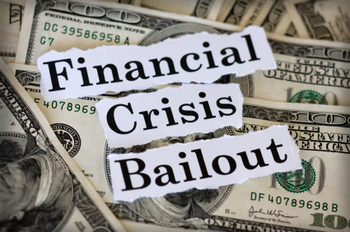
In a lecture at Penn, Sheila Bair offers reforms for U.S. financial system.
Financial regulation is vital to the U.S. economy because it ensures stability, protects investors, and provides security to borrowers. That’s why Sheila Bair, former Chair of the Federal Deposit Insurance Corporation (FDIC), wants to fix what she sees as remaining problems in the federal financial regulatory system.
In a recent event at the University of Pennsylvania, Bair urged greater steps be taken to end the risk of having banks that are “too big to fail.” For example, she supports a proposed bill, the Terminating Bailouts for Taxpayer Fairness Act, which would require big banks to fund fifteen percent of their balance sheets with equity capital. These compulsory funds would be designed to help prevent the resolution of larger financial institutions, or at least lessen the blow if they fail.
Bair argued that in the long term banks should downsize. She referred to evidence that smaller banking groups are more efficient, and she argued that large banks need to simplify their legal structures so that independent components can be recapitalized and sold in the event of bankruptcy.
Bair explained how a plan put forward by the FDIC would prevent the total dissolution of big banks currently at risk for bankruptcy. Under the plan, the bank’s debts would fall on the holding company, which presumably would have sufficient funds to cover these costs. Again, even if the holding company does not have the ability to absorb the debt, the plan would limit the damage to the economy.
One problem with the FDIC’s plan is ensuring that the holding companies carry ample equity. To deal with this, Bair recommends additional regulations that create better caps on leverage—the amount of risk that companies are willing to take. She endorses setting a simple, effective leverage ratio—that is, a ratio to measure a company’s ability to meet its financial obligations—at eight percent, though she argued that there is academic support for a rate up to twenty percent. Currently, banks create their own risk analysis to calibrate the capital they hold. As a result, the amount of leverage increases because financial institutions expect deposit insurance and government bailouts to cover their losses.
According to Bair, there is significant need to deal with speculation in the credit derivatives market. Through credit default swaps, companies insure their losses from defaulted loans. While Bair explained that there are legitimate uses for the practice—such as in bona fide hedging—she emphasized that in risky speculation, the use of default swabs creates a preference for loan failure rather than repayment.
Bair also urged the reform of securitization markets. She suggested that this volume-based business is troublesome because it motivates banks to originate high-risk loans by making profits available up front. Bair explained that the Dodd-Frank Act helps to remove some of these incentives because companies that originate these loans are required to hold five percent of the risk. However, she argued that even Dodd-Frank does not succeed in forcing banks to retain risks in the long term.
Bair ultimately turned her attention to the regulatory process and argued that the “revolving door”—where regulators move from government to industry, and back again—needs to be remedied. The trouble arises, she said, when regulators implicitly avoid burning bridges with their future employers when enforcing new rules, a concern discussed in a recent paper from the Project on Government Oversight. (That said, an American Accounting Association study on the Securities Exchange Commission (SEC) indicates that enforcement increases when SEC lawyers are able to migrate to industry-defending firms.)
Bair advocated greater efforts to persuade government lawyers and other regulatory officials to stay in government. She suggested changes in compensation, training, and post-employment programs.
Bair’s remarks drew on her recent book, Bull by the Horns: Fighting to Save Main Street from Wall Street and Wall Street from Itself. Her lecture was co-sponsored by the Wharton School of the University of Pennsylvania and The Penn Institute for Urban Research.



